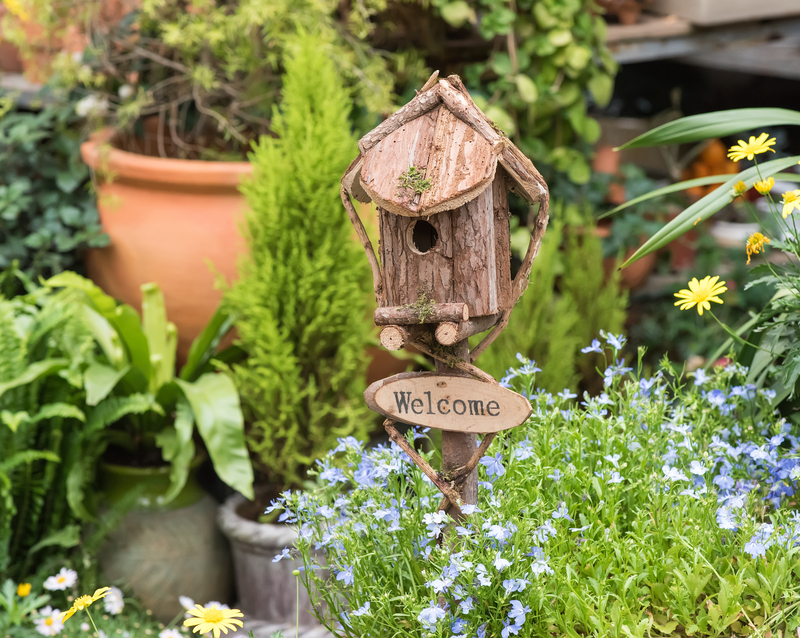The Ultimate Guide to Avoiding Bad Plastics
Plastic is everywhere in our modern lives. From food packaging to everyday items, this versatile material has become nearly impossible to avoid. But not all plastics are created equal. Some plastics - often called bad plastics - have been linked to health hazards, environmental destruction, and persistent pollution. If you're looking to make healthier choices for your family and the planet, it's vital to know which plastics to avoid and how to find safer alternatives.
In this comprehensive guide, we'll cover:
- What bad plastics are and why they're harmful
- How to identify dangerous plastics using recycling codes
- Practical strategies to avoid unhealthy plastics in your daily life
- Eco-friendly and safe alternatives to hazardous plastics
- FAQ on common myths and facts about plastic safety
Understanding Bad Plastics: What Makes Some Plastics Dangerous?
Plastics are synthetic materials made from polymers derived mainly from fossil fuels. The problem isn't with all plastics, but with specific types that leach harmful chemicals or degrade poorly in the environment. These toxic plastics can threaten our health and the well-being of our planet.
Why Should We Be Concerned About Hazardous Plastics?
- Chemical leaching: Some plastics release toxins, such as Bisphenol A (BPA), phthalates, or styrene, which can disrupt hormones and increase cancer risk.
- Environmental pollution: Many plastics never fully decompose and break down into microplastics, contaminating water, soil, and food chains.
- Bioaccumulation: Harmful chemicals from plastics accumulate in human and animal tissues, posing long-term health risks.
Common Dangerous Plastics
The most notorious bad plastics include:
- Polyvinyl Chloride (PVC - Recycling Code #3): Used in pipes, toys, and food packaging. Contains phthalates and releases dangerous dioxins.
- Polystyrene (PS - Recycling Code #6): Found in foam cups and fast-food containers. Leaches styrene, a possible carcinogen.
- Polycarbonate (PC, often labeled as #7 or "Other"): Used in baby bottles, water coolers, and food containers. Can release BPA, an endocrine disruptor.
- Low-Quality Polyethylene Terephthalate (PET or PETE - Recycling Code #1): Though generally considered safe for single use, reuse or exposure to heat can increase leaching of antimony and other substances.

How to Identify & Avoid Toxic Plastics: The Recycling Code System
Not all plastics are equally dangerous. One of the easiest ways to distinguish between good and bad plastics is by checking recycling codes, usually found on the bottom of products. These codes - numbered 1 through 7 inside a triangle - reveal the type of plastic used.
Plastics to Avoid (The Most Harmful Types)
- #3 PVC (Polyvinyl Chloride): The "poison plastic." Used in cling wrap, pipes, toys, and containers. Contains phthalates and chlorine-based chemicals, which have been linked to hormonal disruption, reproductive damage, and increased cancer risk.
- #6 PS (Polystyrene): Used for disposable plates, cups, takeout boxes, and meat trays. Leaches styrene, considered a possible carcinogen and neurotoxin by health agencies.
- #7 Other (often Polycarbonate): A catch-all category. May contain BPA, connected to birth defects, developmental delays, and hormone problems.
Plastics That Are Generally Safer
- #1 PET or PETE (Polyethylene Terephthalate): Found in drink bottles and food jars. Safe for single use but not for heating or reuse.
- #2 HDPE (High-Density Polyethylene): Used in milk containers, detergent bottles, and toys. Stable and rarely leaches chemicals.
- #4 LDPE (Low-Density Polyethylene): Flexible, used in bags and wraps. Considered safe for food storage.
- #5 PP (Polypropylene): Used in yogurt cups, baby bottle nipples, and straws. Heat-resistant and among the safest options.
When possible, choose plastics marked with #2, #4, or #5. Avoid #3, #6, and #7 for direct food contact, drinking, or children's items.
Practical Tips for Avoiding Bad Plastics in Everyday Life
Steering clear of harmful plastics doesn't have to be complicated. Follow these proven strategies to decrease your exposure and protect your health:
Choose Plastic-Free or Safe Plastic Food Storage
- Switch to glass, stainless steel, or silicone containers for leftovers, lunches, and pantry storage.
- Avoid heating or microwaving plastics: Heat increases chemical leaching, especially for containers not marked microwave-safe.
- Skip plastic wrap and disposable utensils: Opt for beeswax wraps or reusable alternatives.
Make Smarter Shopping Decisions
- Buy in bulk to reduce plastic packaging waste.
- Bring reusable bags to minimize disposable plastics.
- Choose products packaged in paper, glass, or metal when possible.
- Avoid "recycle code #3, 6, or 7" plastics for food, drinks, and toys.
Protect Babies and Children from Bad Plastics
- Never use old or scratched polycarbonate baby bottles (often marked with #7); choose glass or BPA-free polypropylene bottles.
- Avoid plastic pacifiers and teethers containing phthalates.
- Choose toys labeled "phthalate-free" and "BPA-free".
Reduce Your Exposure to Plastics in the Kitchen
- Do not store fatty, acidic, or hot foods in plastic containers. Fats absorb chemicals more easily.
- Hand wash plastics gently (avoid hot dishwasher cycles that weaken plastic).
- Replace old, cloudy, or cracked plastics immediately.
Eco-Friendly and Healthy Alternatives to Hazardous Plastics
As awareness grows, the market is full of innovative, safer alternatives to bad plastics:
Top Non-Plastic & Safer Plastic Solutions
- Glass: 100% non-toxic, non-leaching, and fully recyclable. Great for food and beverages.
- Stainless steel: Durable, safe, and reusable. Perfect for lunch boxes, water bottles, and straws.
- Silicone: Flexible, heat-resistant, and food-grade (choose platinum cured).
- Bamboo & wood: Sustainable tools and tableware options.
- Certified compostable bioplastics: Look for "BPI-certified" or "OK Compost" labels.
- Safe plastics (HDPE, LDPE, PP): For when alternatives are unavailable, these are low-toxicity options.
Tip: Read labels carefully and contact manufacturers if in doubt about a product's plastic content or certification.

Common Myths & Facts About Plastics: FAQ
Are All Plastics Equally Unsafe?
No. As explained above, plastics such as HDPE, LDPE, and PP are much safer than PVC, PS, or polycarbonate. Knowing how to identify and avoid the dangerous types is key.
Does "BPA-Free" Mean a Plastic is Safe?
Not always. Manufacturers may replace BPA with similar chemicals like BPS or BPF, which have comparable risks. Look for alternatives such as glass, stainless steel, or certified food-safe plastics instead.
Can I Recycle Bad Plastics?
Recycling is not a cure-all. Most facilities only accept a few kinds of plastics. Many "bad" plastics end up in landfills or the environment. Reducing use is more effective than relying on recycling.
Are Single-Use Plastics Always Dangerous?
Not necessarily. Single-use PET (#1) bottles are generally safe if not reused or exposed to heat. However, minimizing all single-use items is better for your health and the planet.
What About "Compostable" or "Biodegradable" Plastics?
Be cautious. Many of these require industrial composting facilities and do not easily decompose in home environments. Research the certification and end-of-life options before purchase.
Conclusion: Take Action to Avoid Bad Plastics Today
Avoiding bad plastics is one of the simplest, most impactful decisions you can make for personal health and environmental sustainability. By learning to recognize hazardous plastics, adopting safe plastic alternatives, and making conscious purchasing choices, you not only reduce your chemical exposure but also help curb plastic pollution.
- Always check recycling codes and choose the safest plastics.
- Invest in glass, stainless steel, and other non-plastic materials for food, drink, and children's items.
- Spread awareness about the dangers of bad plastics and inspire others to make positive changes.
Remember, every step counts, and even small changes in your daily habits can lead to a healthier, greener future. Start your journey to a plastic-safe lifestyle today!
Further Resources on Avoiding Harmful Plastics
If you found this ultimate guide on avoiding bad plastics helpful, be sure to share it and raise awareness. For more tips on healthy living and sustainability, subscribe to our newsletter!